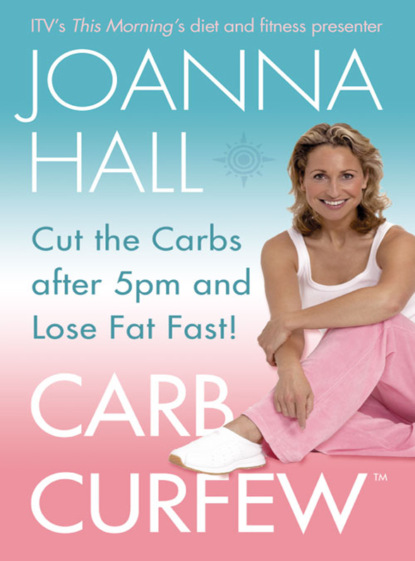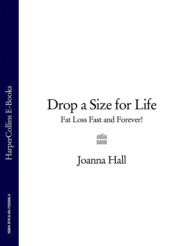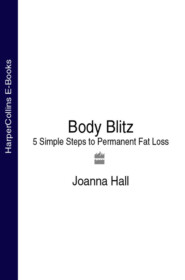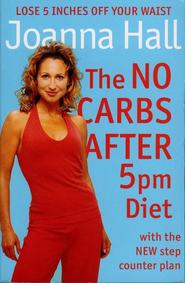По всем вопросам обращайтесь на: info@litportal.ru
(©) 2003-2024.
✖
Carb Curfew: Cut the Carbs after 5pm and Lose Fat Fast!
Автор
Год написания книги
2018
Настройки чтения
Размер шрифта
Высота строк
Поля
Getting Your Diet Right
The first thing we need to look at are the basics of our diet. It is very important to get the fundamentals of our diet right, with the right nutrients in the right balance at the right time. A good diet includes food from each of the four nutrient food groups. These food groups are:
Carbohydrates
Proteins
Fats
Water
Carbohydrates
Carbohydrates form the backbone of our diet. Fruit, vegetables, simple sugars such as biscuits and cakes, and starches such as potatoes, rice, pasta and bread are all carbohydrates. Carbohydrate-rich foods supply the body with its primary source of fuel – glucose. Glucose is a type of sugar which the body can easily use and transport – when we talk about blood sugars we are actually talking about our blood glucose levels. Glucose can be stored in the muscles as glycogen and is the main source of fuel for our working muscles, the nervous system and brain. We will be talking more about carbohydrates and starch in chapter three.
Proteins
Proteins are essential for tissue repair, maintenance and growth. They are crucial for our health as they make up part of every cell in the body. A regular supply of protein is required in the diet to aid the continual tissue regeneration that occurs in the body. Proteins are made up of smaller units called amino acids. Not all proteins contain all the essential amino acids required by our bodies – this is why if we are vegetarian we need to ensure that we have a variety of protein sources to ensure our bodies are getting a complete range of the necessary proteins. Protein can be divided into two groups: dairy products, which include cheese, yoghurt and eggs; and non-dairy sources, which include meat, fish, pulses and beans. The important role that protein plays in repairing the body means that it is much harder for the body to store excess protein as body fat in the cells.
Dietary Fats
Dietary fats come from a variety of sources. There are various ways of defining fats but one of the simplest is to consider fats as visible and invisible. Visible fats are, as the name suggests, foods that we can see are made of fat. Cheese, butter, oils and creams are examples of visible fats. Invisible fats are foods with a predominant fat content although we may not be aware of it: examples include coconut, avocado and egg yolks. Fats are divided into three groups: saturated, polyunsaturated and monounsaturated. Saturated fats (including unhealthy trans fats) are non-essential fats because they do not play a healthy role in the body and they are associated with an increased risk of heart disease, whereas monounsaturated fats and the omega-3 and omega-6 sources of polyunsaturated fats are essential fats because they have a positive health role to play in the body. Regardless of whether they are essential or non-essential fats they all provide a rich source of energy. See chapter five for more details about dietary fats.
Water
Water is the most overlooked component of our diet – it forms about 60 per cent of our total weight and is involved in every single chemical reaction in the body. If we don’t get enough water we are not providing the right environment for our bodies to perform effectively. It is very important to drink at least eight glasses of water a day – it really does impact how you feel and how your body works. See chapter four for more details.
… and Alcohol
While alcohol is not strictly a food group in its own right it does deserve a special mention as it is such a pleasurable part of our daily lives. It is vital however that we understand the role it plays in the body and how it constrains long-term fat loss and weight management. Alcohol does supply us with a source of energy but it is not a nutrient as it is not necessary for life and it is harmful to health when consumed in excess. See page 78 for more about this.
Getting the Balance Right
For your diet to be balanced you need to eat a variety of foods from each food group – the various Carb Curfew diet strategies will go into this in more detail. Carbohydrates should form the backbone of your diet, specifically fruit and vegetables and starchy whole grains. However, don’t fall into the trap of eating too many whole-grain starches in the belief that because they are low in fat you can eat more. This is the most common mistake I see with my clients – they may be low in fat but they still contain calories. Proteins should be consumed in a smaller volume and fats should make up the smallest part of your diet.
Most foods contain a variety of protein, fat and carbohydrate, although the combination can vary greatly from one food to another. Hence we tend to define a food by its main food group. If you consume excess calories from any of these food groups – not just fat – you will gain weight and body fat. Whilst some of the nutrients have specific jobs to do, once these jobs have been done any excess calories will simply be stored as fat within our fat cells.
Each of these food groups will provide an energy or calorie value to the body. Carbohydrate and protein provide 4 calories per gram, fat provides 9 calories per gram and alcohol provides 7 calories per gram. So we don’t have to be an Einstein to realize that we need to look at the composition of the foods we eat as well as the total number of calories we are consuming if we want to control weight and body fat levels.
Unfortunately, there are no miracle foods to ensure weight loss. It is the whole picture of what we eat that is important for our health, weight and body fat. Carb Curfew will show you that with a little knowledge you can eat whatever you want and still realize your weight and body fat goals.
The Basic Nutrients
CARBOHYDRATES
FRUIT
Typical examples: apples, oranges, pears, grapes, plums
Calories per gram: 4 (fruit and vegetables have a high water content so the calories per weight is kept low)
Function in the body: provides essential minerals and vitamins
When/how much do we need?: minimum 5 portions fruit and vegetables a day (see page 48 for more about this). Spread fruit and vegetable intake throughout day to avoid gastro discomfort
BE AWARE:
most people fall short of quota
VEGETABLES
Typical examples: carrots, kale, onions
Calories per gram: 4 (vegetables, like fruit, have a high water content so the calories per weight is kept low)
Function in the body: provides essential minerals and vitamins
When/how much do we need?: minimum 5 portions fruit and vegetables; spread intake throughout the day
BE AWARE:
most people fall way short of quota, finding it easier to grab a piece of fruit than hitting the vegetable quota
STARCHES
Typical examples: bread, pasta, rice, potatoes
Calories per gram: 4
Function in the body: good source of fuel for the body to use during the day
When/how much do we need?: 3–4 servings a day. Keep to breakfast and lunch to match energy demands and energy delivery. Avoid in evening meal
BE AWARE:
most people mistakenly eat too much when trying to lose weight. Comfort eating of these starchy carbohydrates increases overall calorie intake leading to weight and body fat gain
PROCESSED SUGARS
Typical examples: honey, syrup, jams
Calories per gram: 4
Function in body: provides instant energy into the bloodstream causing the blood sugars to rise and then sharply fall
When/how much do we need?: keep to an absolute minimum. Obtain sugars from natural fruit sources
BE AWARE:











